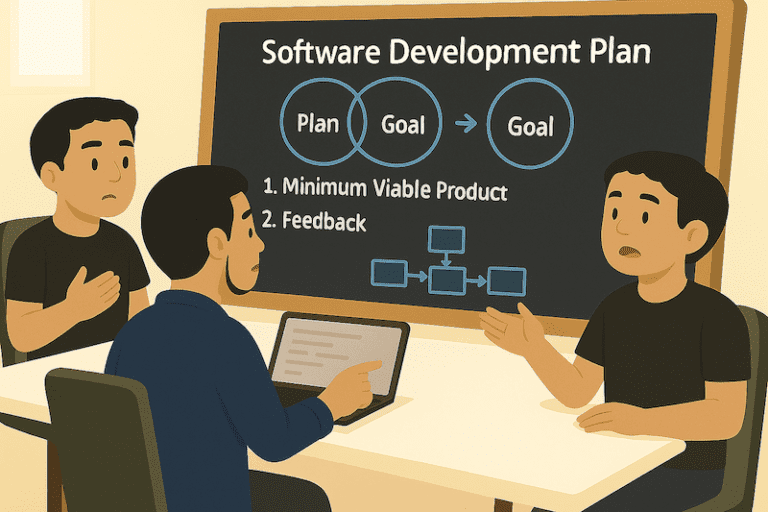Why We Recommend Starting Small
Some clients come to us with big visions — building large-scale platforms, complete ecosystems, or feature-packed apps. And while ambition is a great start, we often encourage a smarter approach: start small.
Advising clients to begin with a lean, focused Minimum Viable Product (MVP) isn’t just a budget-saving strategy — it’s a proven method for building successful products. Here’s why:
1. Validate Before You Invest
Starting small allows you to test your idea with real users before committing to a full-scale build.
We’ve consulted many clients who dream of launching a massive social network — for friendships, dating, or niche communities. They often imagine millions of users from day one. But in reality, business traction is a bigger challenge than tech scalability.
- It’s smarter to validate market demand first — then scale.
- This approach avoids pouring resources into unproven assumptions.
Contact us at the Consulting WP office nearest to you or submit a business inquiry online.
2. Reduce Risk
Big projects come with high complexity, more stakeholders, longer timelines — and more room for things to go wrong.
When building the Educational Video Course App, we agreed to use the simplest tech stack to launch the MVP within 2 months. If the initial version proved valuable, the client could scale later.
🎯 Start simple. Prove it works. Then grow with confidence.
➡️ Smaller scope = easier to manage, less technical debt, and more flexibility.
3. Faster Time to Market
Launching a small version helps you go live in weeks, not months.
In our F&B mobile and POS solutions, we followed the 80/20 rule — building the core 20% of features that deliver 80% of the value. It helped gather feedback early and guided the next iterations.
🚀 Getting into users’ hands fast builds momentum and validates direction.
➡️ Early feedback can shape smarter roadmaps.
4. Focus on Core Value
When starting small, you’re forced to clarify: What truly matters to users?
In the F&B software projects, we prioritized features based on direct user needs and early feedback — not assumptions.
🎯 The goal is usefulness, not feature count.
➡️ Eliminate distractions and focus on what delivers value.
5. Learn from Real Users
Early releases allow teams to learn how users actually behave — not how we assume they will.
Thanks to Agile development, we released updates every 2 weeks for both our F&B software and a digital transformation project for an internal company process. The feedback loop was fast, and priorities became clearer over time.
🧪 Real usage beats theoretical planning.
➡️ Continuous learning leads to better product decisions.
6. Control Budget
Most clients don’t have unlimited resources. Starting small lets them launch within budget, show results, and justify further investment.
It also creates clear cost structure and scope control, which increases trust and reduces tension.
💡 It’s easier to manage costs and expectations when both are small.
➡️ Scale sustainably, not blindly.
Starting small doesn’t mean thinking small — it means building smart.
At Nextafly, we believe in helping our clients grow with confidence by starting lean, learning fast, and scaling wisely.

